Frank Lloyd Wright’s iconic works, Fallingwater and Kentuck Knob, offer a captivating glimpse into the architect’s distinct visions of organic architecture. While Fallingwater’s dramatic cantilevered design dramatically integrates with a cascading waterfall, Kentuck Knob’s low-profile, Usonian style complements its serene hilltop setting. These masterpieces not only showcase Wright’s remarkable versatility but also illustrate his revolutionary approach to the relationship between buildings and their natural surroundings. Exploring the contrasts and similarities between these two architectural gems provides a deeper understanding of the breadth of Wright’s groundbreaking ideas.
Key Points
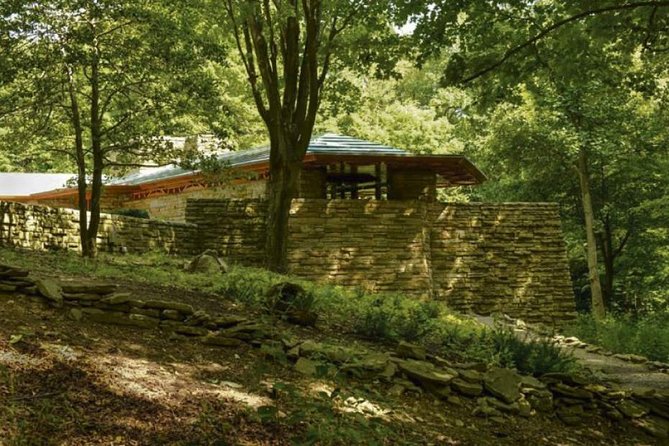
- Fallingwater’s dramatic cantilever design and integration with a waterfall showcase Wright’s bold, powerful interpretation of organic architecture.
- Kentuck Knob’s more subtle, low-profile Usonian style and harmonious blending with the natural landscape represent a serene, contemplative aspect of Wright’s organic vision.
- Both homes masterfully demonstrate Wright’s ability to seamlessly incorporate architecture within the surrounding environment, but through distinct design approaches.
- Fallingwater’s groundbreaking construction techniques and innovative use of reinforced concrete pushed the boundaries of architecture, while Kentuck Knob embodied a more modest, geometric aesthetic.
- Collectively, Fallingwater and Kentuck Knob illustrate the remarkable breadth and versatility of Frank Lloyd Wright’s organic architecture philosophy, from the grand and imposing to the intimate and serene.
Discovering Fallingwater’s Architectural Brilliance
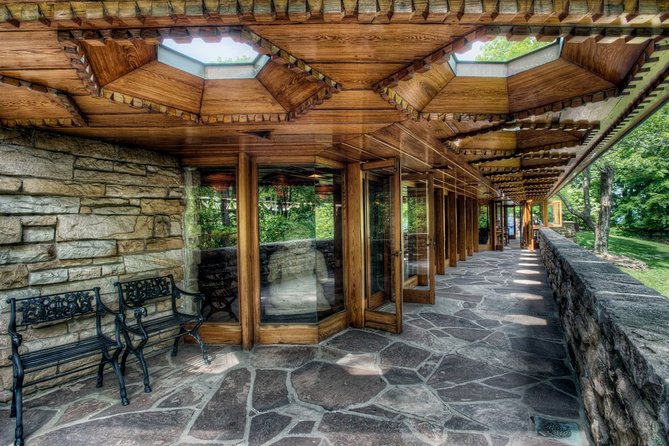
Fallingwater, the iconic architectural masterpiece designed by Frank Lloyd Wright, showcases his remarkable ability to seamlessly integrate a structure with its natural surroundings.
Perched over a 30-foot waterfall in the heart of the Laurel Highlands, the home appears to emerge from the rocky outcrop, creating a harmonious blend of man-made and nature.
The cantilevered design, with its dramatic overhanging terraces, is a testament to Wright’s engineering prowess.
Intricate stone masonry and the use of natural materials like sandstone and concrete further accentuate the home’s connection to its environment.
Fallingwater’s timeless elegance and innovative design have cemented its status as one of the most iconic works of 20th-century architecture, captivating visitors from around the world.
You can also read our reviews of more tours and experiences in Pittsburgh.
Exploring Kentuck Knob’s Unique Design
Along With the renowned Fallingwater, the Kentuck Knob is another architectural gem designed by Frank Lloyd Wright that showcases his unique design philosophy.
Nestled atop a hill in the Laurel Highlands, the Kentuck Knob features Wright’s signature Usonian style, with its low-slung roofline, natural materials, and seamless integration with the surrounding landscape.
The structure’s cantilevered design and use of native stones create a harmonious blend of modern and organic elements.
Though smaller in scale compared to Fallingwater, the Kentuck Knob exemplifies Wright’s commitment to creating structures that embody the principles of organic architecture, where the building and its environment become one.
Visitors can explore the home’s interior and grounds, marveling at the architect’s innovative approach to residential design.
Comparing Wright’s Organic Philosophies
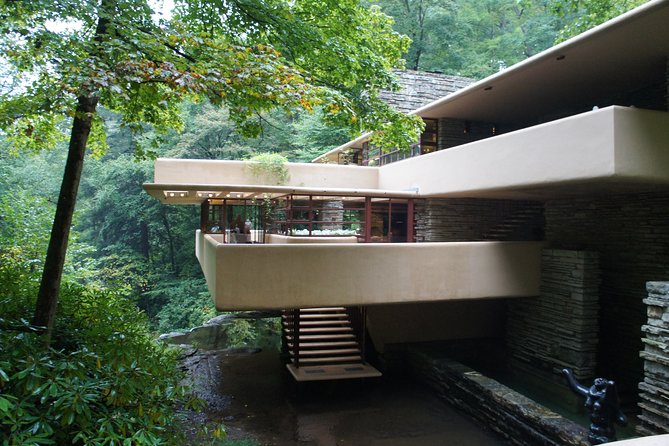
Frank Lloyd Wright’s organic architecture philosophies can be seen in both his renowned Fallingwater and the lesser-known Kentuck Knob, though each structure showcases his design principles in distinct ways.
Fallingwater’s dramatic cantilevers and integration with the waterfall exemplify Wright’s concept of ‘organic architecture,’ where the building becomes one with its natural setting.
In contrast, Kentuck Knob’s more subtle, low-profile design reflects Wright’s belief that architecture should complement, rather than dominate, the landscape.
Both homes, however, share Wright’s use of natural materials and embrace the surrounding environment as an integral part of the overall design.
These two masterpieces demonstrate the versatility of Wright’s organic approach and his enduring influence on modern architecture.
Insights Into Fallingwater’s Historical Significance
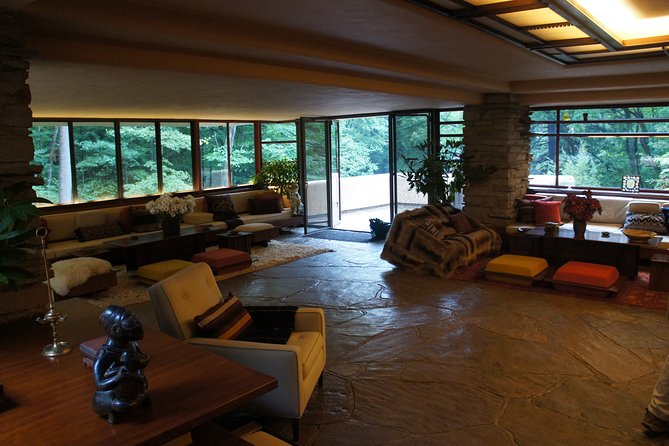
Widely regarded as one of Wright’s most iconic and influential works, Fallingwater’s historical significance stems from its groundbreaking architectural design and seamless integration with the natural landscape.
Constructed in 1935 over a waterfall in rural Pennsylvania, the home’s cantilever design and use of natural materials like stone and concrete were revolutionary, challenging conventional notions of building and emphasizing harmony between structure and site.
Fallingwater’s innovative approach to blending indoors and outdoors has had a lasting impact on modern architecture, inspiring generations of designers to rethink the relationship between built and natural environments.
Today, the home stands as a testament to Wright’s visionary ‘organic architecture‘ philosophy, offering visitors a unique opportunity to experience his bold architectural vision in person.
Experiencing Kentuck Knob’s Serene Ambiance
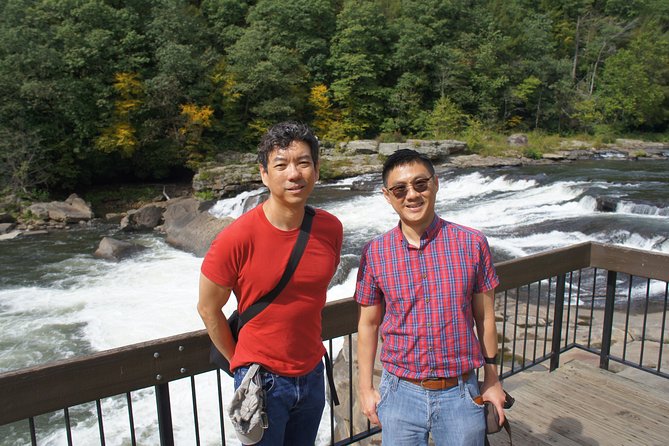
Why, nestled among the rolling hills of southwestern Pennsylvania, lies the serene and idyllic Kentuck Knob, another iconic Frank Lloyd Wright creation that complements the grandeur of Fallingwater.
Designed in 1953 for the Hagan family, Kentuck Knob exudes a tranquil ambiance with its natural materials and organic architecture. Visitors can explore the home’s cantilevered roof, floor-to-ceiling windows, and seamless integration with the surrounding landscape.
The property also features a sculpture garden showcasing over 30 contemporary works. With its peaceful setting and thoughtful design, Kentuck Knob offers a unique glimpse into Wright’s vision of harmonizing architecture and nature.
It’s a must-see companion to the renowned Fallingwater, providing a serene counterpoint to its more dramatic sibling.
- Fire in the Valley- Carnegie Steel and the Town That Built America
- Wigle Whiskey Rebellion Distillery Tour
- FALLINGWATER – Americas UNESCO World Heritage Masterpiece!
- Pittsburgh Penguins Ice Hockey Game Ticket at PPG Paints Arena
- Participate in a Fun Scavenger Hunt in Pittsburgh by Wacky Walks
- Pittsburgh Bar Hunt: Party Through Pittsburgh Bar Crawl
Appreciating the Contrast in Wright’s Visions
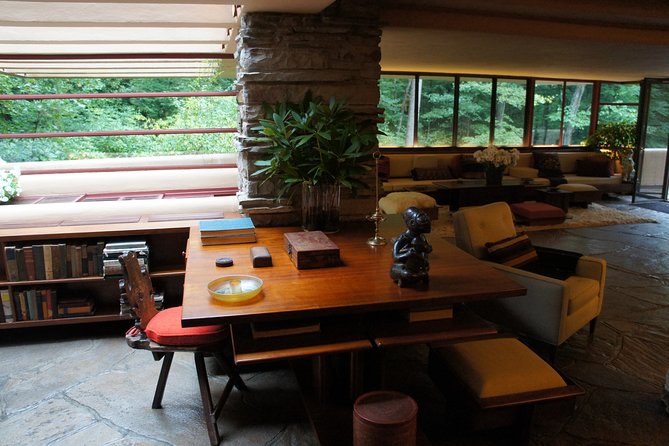
While Fallingwater and Kentuck Knob both exemplify Frank Lloyd Wright’s architectural genius, they present a captivating contrast in his creative visions.
Fallingwater’s dramatic cantilevered design dramatically integrates the home with its waterfall setting, embodying Wright’s philosophy of organic architecture.
In contrast, Kentuck Knob’s more subtle, geometric structure blends harmoniously with its natural hilltop surroundings.
Where Fallingwater projects a sense of raw power, Kentuck Knob exudes a calmer, more contemplative atmosphere.
Yet both structures masterfully showcase Wright’s ability to create homes that are in perfect harmony with their environments.
This juxtaposition of approaches underscores the remarkable breadth and versatility of the legendary architect’s vision.
Understanding Fallingwater’s Groundbreaking Construction
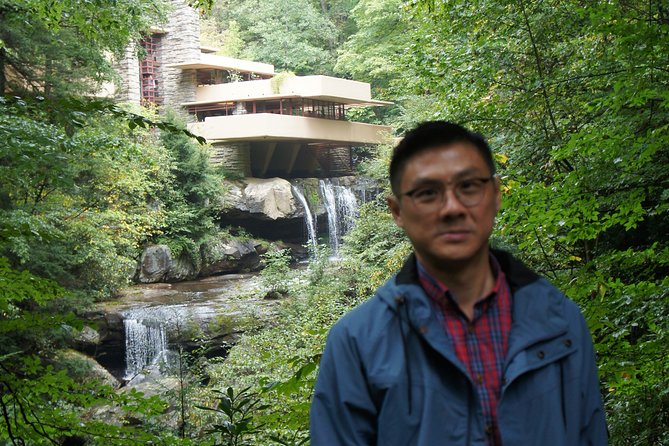
Fallingwater’s groundbreaking construction exemplifies Frank Lloyd Wright’s innovative engineering prowess and vision for seamlessly integrating a home with its natural surroundings.
Completed in 1939, the iconic residence features cantilevered concrete terraces that dramatically extend over the waterfall below. This daring architectural feat was made possible by Wright’s unique use of reinforced concrete, a relatively new building material at the time.
The home’s organic design blends harmoniously with the rugged terrain, creating a striking visual contrast between the natural landscape and the man-made structure. Fallingwater stands as a testament to Wright’s ability to push the boundaries of design and engineering, forever transforming the relationship between architecture and the environment.
Exploring the Synergy Between Homes and Nature
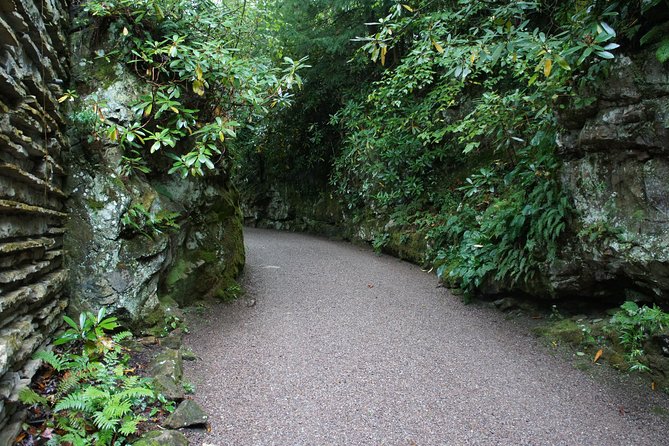
Frank Lloyd Wright’s architecture embodies a profound respect for the natural world, seamlessly integrating homes into their surrounding landscapes.
At Fallingwater, Wright’s iconic masterpiece, the residence appears to emerge from the waterfall, blending harmoniously with the rocky terrain. Similarly, Kentuck Knob showcases Wright’s ability to create structures that complement their environment.
The home’s sweeping cantilevers and natural materials, such as sandstone, echo the undulating hills and lush forests of its mountain setting. Wright’s designs demonstrate a deep understanding of how architecture can enhance, rather than dominate, the natural beauty of a site.
His vision inspires a sense of wonder, inviting occupants to connect with the rhythms and elements of the great outdoors.
Frequently Asked Questions
How Long Is the Private Tour From Pittsburgh?
The private guided tour from Pittsburgh to Fallingwater and Kentuck Knob runs for approximately 5-6 hours, according to the provided details. The tour includes pickup from a Pittsburgh hotel or airport and comprehensive narration throughout the journey.
What Time Does the Tour Start and End Each Day?
The tour operates from 6:30 AM to 12:00 PM on Monday, Tuesday, Thursday, Friday, Saturday, and Sunday. Pickup is from a Pittsburgh hotel or airport, and the tour includes transportation, narration, and admission to the sites.
Do the Tour Prices Include Admission to the Homes?
The tour prices do not include admission to Fallingwater and Kentuck Knob. Admission details for these homes are provided on the tour voucher, and visitors must purchase tickets directly from the sites.
Is the Tour Wheelchair Accessible?
The tour is wheelchair accessible and service animals are allowed. This provides a personalized experience for all travelers, ensuring hassle-free access to the tour’s inclusions of Fallingwater and Kentuck Knob.
How Soon Will I Receive Confirmation for the Tour?
According to the tour overview, confirmation for the private guided tour from Pittsburgh to Fallingwater and Kentuck Knob will be provided within 48 hours, subject to availability. The confirmation is sent promptly, allowing travelers to plan their trip with ease.
Recap
Fallingwater and Kentuck Knob showcase Frank Lloyd Wright’s remarkable versatility in organic architecture.
While Fallingwater’s dramatic cantilevers dramatically integrate with nature, Kentuck Knob’s serene Usonian design complements its hilltop setting.
Together, these iconic works illustrate Wright’s revolutionary approach, which redefined the relationship between buildings and their natural surroundings.
His mastery of blending structure and environment is a testament to his enduring impact on architecture.
More Tour Reviews in Pittsburgh
Not for you? Here's more things to do in Pittsburgh we have recnetly reviewed
- Best Guided Tours In Pittsburgh
- Best Christmas Experiences In Pittsburgh
- 4 Best Private Car With Driver Services In Pittsburgh
- Bikes & Brews Tour: Pittsburgh Brewery Tour
- Love in the City: Pittsburgh’s Enchanting Romantic Walk
- Fun City Scavenger Hunt in Pittsburgh Review
- Pittsburgh’s Family Treasures An Urban Exploring Adventure
- Pittsburgh Historic Strip District Libation Tour Review
- We Present Noah Sonie in Trust No One Show
- Beers in the Burgh: Pittsburgh Brewery Walk
- Pittsburgh Ghosts Steel City Haunted Tour
- Pittsburgh Pirates Baseball Game Ticket at PNC Park
